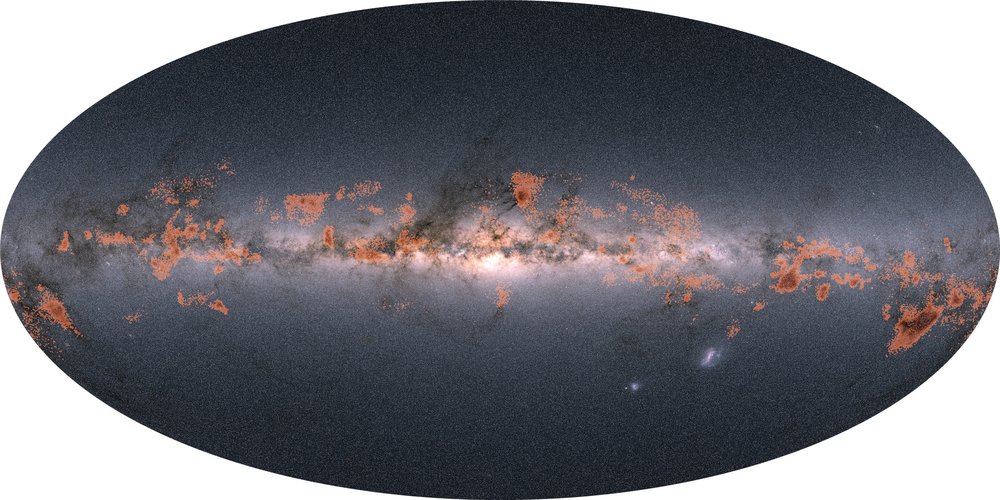
Copernical Team
SpaceX answers critics with successful Starship test flight
 SpaceX's Starship megarocket roared into the skies Tuesday on its tenth test flight, turning in a strong performance after a series of fiery failures had begun to cast doubt on its future.
Towering 403 feet (123 meters), Starship is the most powerful launch vehicle ever built and key to founder Elon Musk's vision of carrying humanity to Mars, as well as NASA's plans to return astronauts
SpaceX's Starship megarocket roared into the skies Tuesday on its tenth test flight, turning in a strong performance after a series of fiery failures had begun to cast doubt on its future.
Towering 403 feet (123 meters), Starship is the most powerful launch vehicle ever built and key to founder Elon Musk's vision of carrying humanity to Mars, as well as NASA's plans to return astronauts SpaceX set once more for Starship test flight
This request seems a bit unusual, so we need to confirm that you're human. Please press and hold the button until it turns completely green. Thank you for your cooperation!
Press and hold the button
If you believe this is an error, please contact our support team.
185.132.36.159 : 37ef9b3b-98c6-45d7-855a-8153c694
NASA test deploys Roman Space Telescope solar panels and 'visor'
This request seems a bit unusual, so we need to confirm that you're human. Please press and hold the button until it turns completely green. Thank you for your cooperation!
Press and hold the button
If you believe this is an error, please contact our support team.
185.132.36.159 : 3c1d77d9-0cd2-4e07-b8af-2f95f58c
SpaceX looks to launch Starship on Tuesday night after two days of scrubs
This request seems a bit unusual, so we need to confirm that you're human. Please press and hold the button until it turns completely green. Thank you for your cooperation!
Press and hold the button
If you believe this is an error, please contact our support team.
185.132.36.159 : b4cf5b68-f2f5-471b-830f-b2a9671a
Four laser links over 300 million kilometres: ESA concludes daring optical communication campaign

Over the summer, the European Space Agency ran an optical communication demonstration campaign using two observatories on Earth and NASA’s Psyche mission. All four optical links were successful.
Turning Martian soil into metal: Scientists test new extraction process
This request seems a bit unusual, so we need to confirm that you're human. Please press and hold the button until it turns completely green. Thank you for your cooperation!
Press and hold the button
If you believe this is an error, please contact our support team.
185.132.36.159 : 51f387b4-bdda-452a-aa20-78958d84
Time moves fast when you are preparing for liftoff!
 Video:
00:02:46
Video:
00:02:46
This video shows a timelapse of the launch preparations for Europe’s first MetOp Second Generation, MetOp-SG-A1, weather satellite, which hosts the Copernicus Sentinel-5 mission. MetOp-SG-A1 was launched aboard an Ariane 6 rocket from the European spaceport in French Guiana, on 13 August at 02:37 CEST (12 August 21:37 Kourou time).
MetOp-SG-A1 is the first in a series of three successive pairs of satellites. The mission as a whole not only ensures the continued delivery of global observations from polar orbit for weather forecasting and climate analysis for more than 20 years, but also offers enhanced accuracy and resolution
Gaia proves our skies are filled with chains of starry gatherings

In the past decade, the European Space Agency’s Gaia mission has revealed the nature, history, and behaviour of billions of stars. Our pioneering stargazer has reshaped our view of the skies around us like no other, revealing that star clusters are more connected than expected over vast distances.
SpaceX scrubs latest Starship launch due to bad weather
 Bad weather on Monday forced SpaceX to postpone the latest launch of its massive prototype Starship rocket, key to founder Elon Musk's dreams of colonizing Mars and NASA's plans to return astronauts to the Moon.
The tenth test flight, which could now happen as soon as Tuesday, comes at a time of heightened scrutiny for the world's most powerful launch vehicle following a string of explos
Bad weather on Monday forced SpaceX to postpone the latest launch of its massive prototype Starship rocket, key to founder Elon Musk's dreams of colonizing Mars and NASA's plans to return astronauts to the Moon.
The tenth test flight, which could now happen as soon as Tuesday, comes at a time of heightened scrutiny for the world's most powerful launch vehicle following a string of explos Uganda biomass use may improve through Aston University mapping data
 New research from Aston University could transform how Uganda manages its biomass resources by providing community-level data instead of national averages.
Scientists at the Energy and Bioproducts Research Institute (EBRI) have created detailed maps of forest biomass supply and local energy demand. Their work highlights where demand exceeds availability, where supply is balanced, and where
New research from Aston University could transform how Uganda manages its biomass resources by providing community-level data instead of national averages.
Scientists at the Energy and Bioproducts Research Institute (EBRI) have created detailed maps of forest biomass supply and local energy demand. Their work highlights where demand exceeds availability, where supply is balanced, and where 